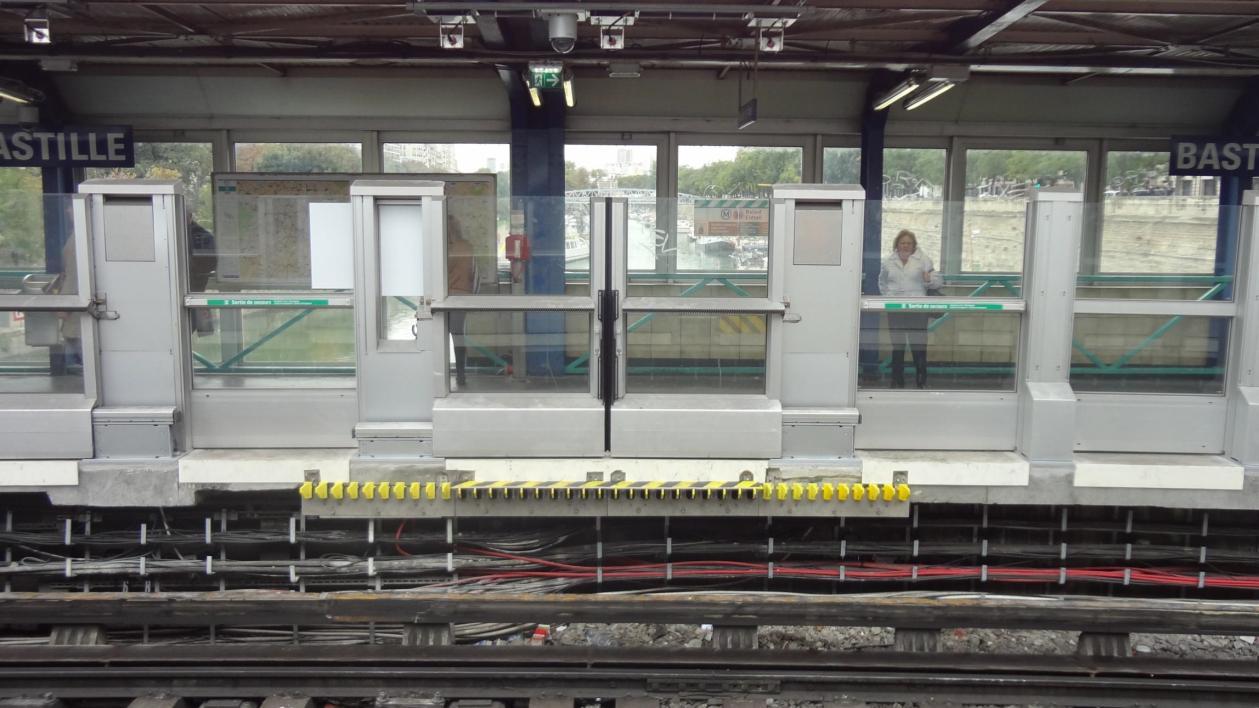
Its principle is to prevent the intrusion of people into the gap by putting a physical obstacle between the platform and the dangerous zone in the lower gap. The device consists of a “comb” of teeth that fills the gap.
Definition of gaps between the platform and the train
A gap between the platform where the passenger is waiting and the train or metro can be present in 2 cases:
- In the case of a curved platform, the space required for train movements is wider than the space occupied by the train at the stop point, generating gaps of varying size depending on the radius of the curve and the position of the door considered. As shown below
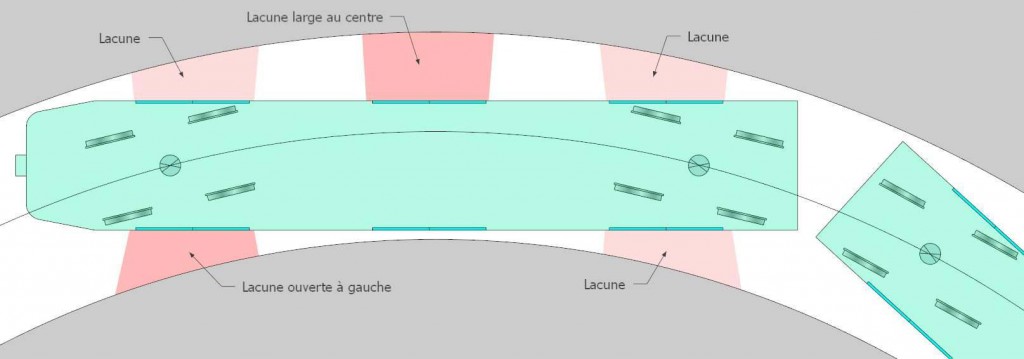
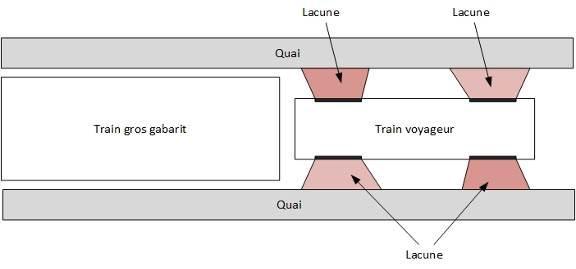
- In the case where there is a significant difference in gauge between the different rolling stock that can run through the stations. For example, in the case where we have a work train with a larger gauge than a passenger train. As shown below
Documentation and certificates
- RATP approval
- Reaction to fire test level M4
- NF P 92-501 (Radiation test)
- NF P 92-504 – Flame propagation speed measurement)
- NF P 92-505 (Drop test)
- Thickness range test F2 (certificate No CC G F 1299/01/298 A) :
- NF X 700-100-1/2 (Smoke toxicity)
- NF X 10-702 (Opacity of smoke)
- NF F 16-101 (Railway rolling stock, fire behaviour, choice of materials)
- STM S-001 index C (Technical material specification)
- Mechanical tests according to CLEARSY specifications
Passive” or “active” device ?
There are two main families of systems to prevent users from falling into these spaces:
Actives systems
These active solutions have been the subject of much work; they prove to be quite mechanically complicated. These solutions can affect stopping times and traffic in case of failure. They can also be useful for another problem, different from that of curved platforms: access for people with disabilities, especially wheelchair users.
Passive systems
The solution we propose has been developed to prevent falls between the platform and the train. It has the great advantage that it cannot present any electrical or mechanical failures (other than destruction). It is of low mechanical complexity which facilitates installation and limits its cost. There is no transition phase that would have an impact on traffic. It is dedicated to the problem of the gap and is completely independent.
The containment of the gap by our passive device
In the figure above, the fall arrest device is used to block the fall of an individual. The device is designed to withstand regular impacts. It consists of 2 parts:
- A flexible element that engages the train gauge but is positioned in an area rarely occupied by the passenger train, ensuring the effectiveness of the device;
- A metal plate (aluminium core) covered with rubber designed to solidify the step and fill the holes between teeth. This plate also allows for a fixation adapted to support the weight of an individual.
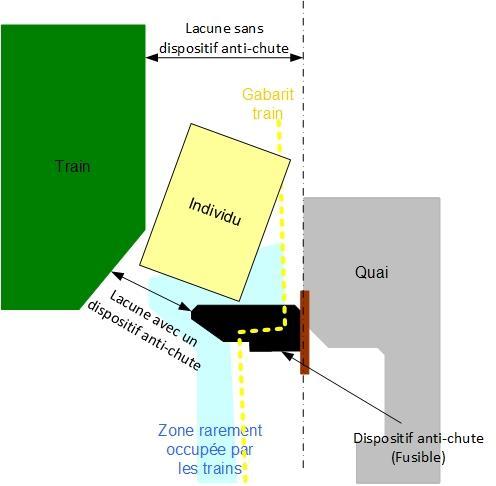
Development of the anti-fall device for travellers
CLEARSY has developed the device to meet the problems of commissioning the automation of line 1 of the Paris metro. This line has 3 curved stations with “low gaps” (Bastille, Charles de Gaulle-Etoile, Nation).
The integration of the platform facades has increased the importance of monitoring or preventing the intrusion of individuals into a gap as the confinement between the train and the platform facade is very dangerous in the event of the train leaving.
This device has enabled RATP to ensure the safety of users with automatic trains. To best equip RATP stations, which have significant differences in their respective platforms, several tooth lengths are used.
On the Lyon metro, where it is also in service, the adjustment was carried out on the fixings, thanks to mobile plates allowing to reach the danger zones.
The different features of our anti-fall system
The plate is used to fix the teeth to the nose of the platform. It is fixed into the platform by the fixing “ears”. It measures 1000 mm x 230 mm x 5mm. This dimension allows for 5 different heights of adjustment for the tines. The width allows for plates with 10 teeth. They can be modified to suit the particularities of the terrain.

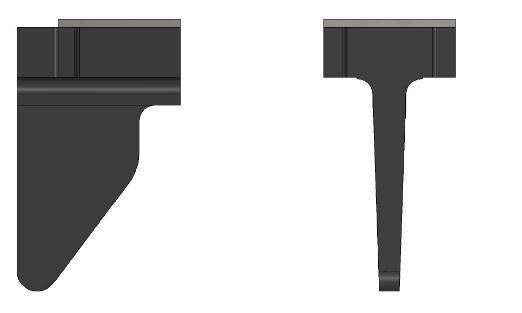
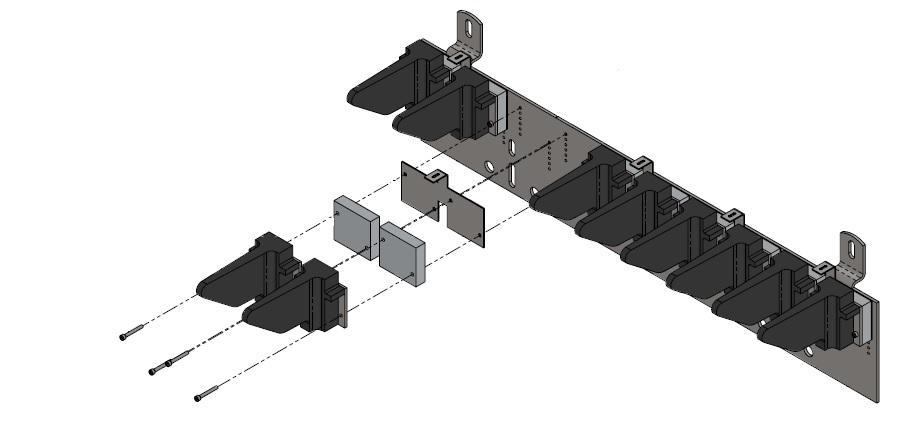
Characteristics of the teeth
A tooth is made of extruded aluminium (Ame) and a part of smoked elastomer, halogen free. There are several lengths of tines: 130 mm, 170 mm, 190 mm, 210 mm. They can be cut to fit the area to be covered more easily, while an aluminium wedge can be added to increase the tooth size.
If a mat is added, a fixing bracket is added to hold it in place. The mat helps to soften the hardness of the fall. It does not help to secure the gap.
Figure 3 shows the installation plan with the wedge and the fixing bracket.
Advantages of the CLEARSY solution
- Proven, qualified and approved by RATP
- Teeth adaptable to the variable gap width
- Adaptable protection length
- Drop resistant material (400 kg vertical) and lateral fusible
- Easy to install and replace each tooth (30 minutes for 4 metres)
- References: Paris line 1 and Lyon line B
Link to this components
Link to this components